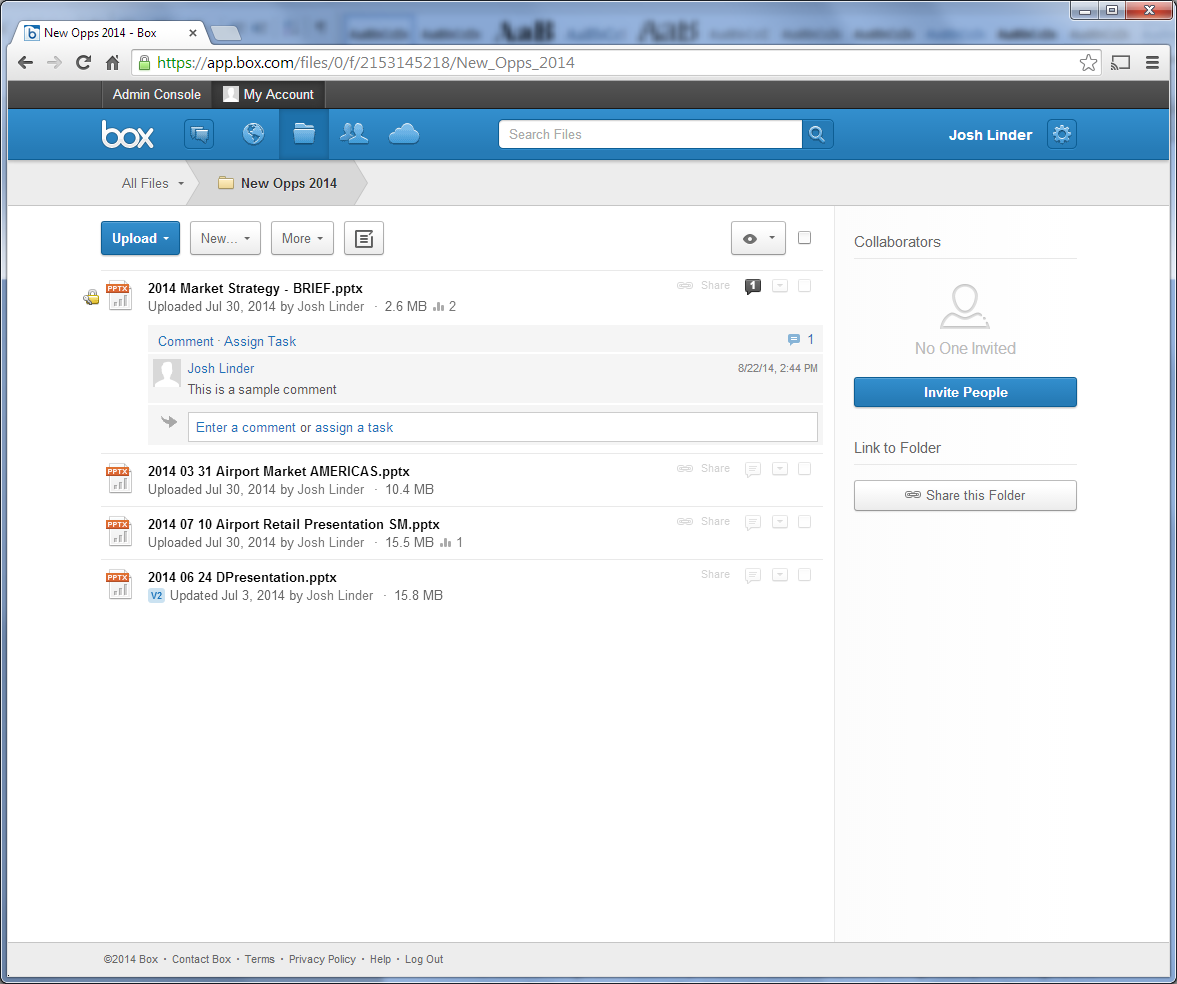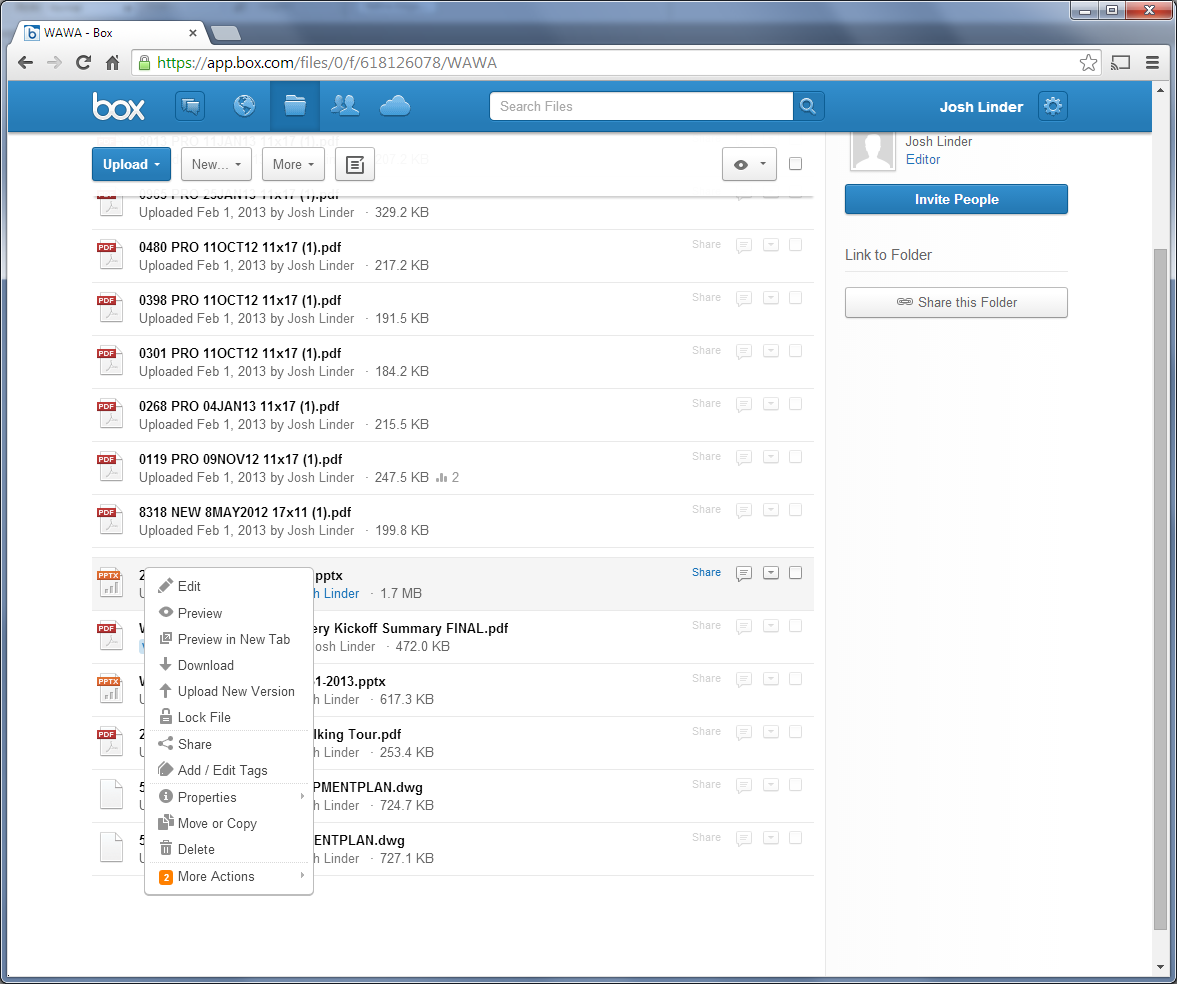Cloud Storage Providers: Comparison Of Features And Prices
Box Cloud Storage - Pricing And Features Overview
Why you can trust Tom's Hardware
Box is all business. The service has gained tremendous momentum over the past year, and is now at an estimated 25 million individual customers and 225,000 enterprise ones.
The Box browser user interface is well-organized, streamlined, intuitive and feature-rich, offering a wide variety of built-in and third-party capabilities. Box behaves like a full application running in a Web browser, including drag-and-drop uploads, right-clicks and top menus. The user interface feels more like a competitor to enterprise tools like Documentum, OpenText LiveLink, IBM FileNet P8 and Microsoft SharePoint than a direct peer to the other services we tested. However, it is a cloud service at its core, and Box offers its sleek functionality and powerful document review (workflow) and collaboration tools to all users.
While administrative controls, unlimited storage and capabilities like Salesforce.com CRM integration are reserved for paying customers, the power and flexibility of Box means that individuals can quickly open a personal account and purchase additional storage.
Box has the most powerful full-text search of all the services, and returns the best results. For instance, while Dropbox returned one result for a sample query that included unique terms split between file name and full-text search, Box returned 58 spot-on results. The instant-results drop-down is handy, and the full-text index rivals enterprise solutions.
On Box’s mobile apps, all file names are easy to see with its thin font, as compared to the other services, which often truncate file names. File sorting can be done in three ways (name, date or size) and the thin iOS 7-matching font allows for more file details than other services.
Both the full browser preview and mobile app viewers are feature-rich, with the most accurate file renditions, including high-quality fonts and correct PowerPoint slide forms. But this comes with a cost – we found that file sizes were large, and previews consumed far more bandwidth than other services. Since users cannot choose between a low- or high-quality image, quick-viewing PDFs is much quicker using other services, even over Wi-Fi. Box errs on the side of quality, which can cost time and money over mobile connections. To its credit, Box warns you when you attempt to preview files on mobile networks.
Collaboration and Synchronization
At its core, Box is a document collaboration service, and performs an excellent job at this task. Everything reasonable and intuitive is here, including the file lock status, colored “flags” on files indicating version numbers, metadata tags, access statistics and workflow task management.
Box is first a Web app and secondarily a synchronization-to-the-desktop service. For people looking to extend their file systems to the Cloud, Box folder synchronization can be set at the top level (like most other services) and – somewhat unique in online services – at each sub-folder. Synchronizing individual folders to a PC is controlled via the Web application, but cannot be tweaked by the operating system (OS) extension.
Sending links to shared folders is also straightforward, and can be accomplished through the browser, mobile app and aforementioned OS extension. There is a lot of power to sharing in Box: links can be open access or only apply to pre-determined collaborators, shared files can be restricted to view-only (not download) and they can be set to automatically expire. These three thoughtful settings are additional mechanisms for the security-conscious or absent-minded.
We noticed a small bug in testing – if you accidentally click on “share” in the browser UI, it immediately sets a link (indicated by the chain link icon) before you actually complete the full action/decision by clicking OK. “Un-sharing” doesn’t take much time, but this can be a security issue for those who don’t realize it.
Integrations
Box has a very comprehensive API integration program, with more than 1000 integrations through more than 550 partners, including CRM, office applications, social collaboration, security and product/project management applications. However, it is important to note that access to the enterprise integrations requires the highest tier of Box pricing, Box Enterprise (or the custom-priced Box Elite). Box Business and Box Enterprise customers also get Active Directory and SSO integration to align with corporate accounts and policies. With a focus on enterprise application integration, Box APIs are designed to make the service a platform for large systems and less of a “developer playground” for small developers.
Two of the more interesting integrations are with Microsoft Office and Google Apps. These illustrate Box’s commitment to being a cloud storage provider and not an application vendor. It clearly separates them from those who try to do both.
Finally, Box has a Content API that exposes all of its key functions to organizations looking to build their own content management platform.
Pricing is slightly different from the other cloud storage vendors. Since Box is designed for the enterprise, caps are set based on individual file size rather than overall storage volume. This is reasonable since bandwidth and practicality dictate a natural glass ceiling. In the past, Box offered lifetime 50GB storage promotions, so there are a number of well-endowed personal accounts in the market. Box truly realizes the promise set forth by cloud storage and sharing.
Box Pricing
Current page: Box Cloud Storage - Pricing And Features Overview
Prev Page Comparison Guide To Cloud Storage Providers Next Page Dropbox Cloud Storage - Pricing And Features OverviewGet Tom's Hardware's best news and in-depth reviews, straight to your inbox.
-
Dags Just wanted to add that there is a remarkable cloud solution from Lacie which is called Wuala. I guess they can't include every cloud service in this article but imo it was worth including this one too. It doesn't have the best performance and response like other solutions but data are encrypted in cloud and in your hard drive. I have many cloud services but for important stuff I have Wuala drive.Reply -
S1owJam I would like to add that about a month ago, Microsoft adjusted the file size limit for OneDrive to 10GB per file, for any file, not just Office Docs.Reply -
huilun02 Best cloud service is your own server...Reply
No storage limitation and subscription. Any platform you want and always in your country.
Apart from the many other things you can do with your own server... -
Solandri Reply
What makes you think the NSA is the only organization out there snooping around your files and network traffic?14451880 said:THEY ARE US BASED AND THEREFORE 100% NOT SECURE AND UNDER THE TYRANNY OF THE NSA!
All of these cloud storage services store your files unencrypted. A bored employee at the storage company could browse through your files if they wanted to. I use boxcryptor to seamlessly encrypt my files before they ever reach the cloud storage server. That protects against bored employees, the NSA, Chinese government hackers, the Russian mob, etc.
That's fine in theory, but the reality is that most people's home Internet is asymmetrical with much slower upload speeds than download. Once you add an encryption layer and cloud service layer, file transfer speeds can become frustratingly slow. e.g. I couldn't get a movie to stream reliably with my server sitting on a 35/15 Mbps FIOS connection.14453023 said:Best cloud service is your own server...
No storage limitation and subscription. Any platform you want and always in your country.
Apart from the many other things you can do with your own server...
And the way most people use cloud storage, the whole point is backup redundancy. A storage company takes care of that with your files stored on a RAID (or RAID-like) drive array, backed up off-site on a regular schedule (usually every night, sometimes hourly). The vast majority of people I know can't even make themselves do a monthly backup of their files to an external HDD like I recommend to them.
If you have the time, equipment, and discipline to do all those things yourself and your Internet upload speed is really fast, then a home server is a great way to do "cloud" storage. But for the vast majority of people, having a company take care of all that for you is a better solution. What's the point of backing up your irreplaceable photos on your personal "cloud" server if it's in the same room as your computer and camera when your house burns down? For most people it makes more sense to use a cloud storage company, just make sure to encrypt your files before you hand them over. -
junkeymonkey where are these servers at ?? china? India ? Pakistan? who knows .. security ?/--who knows looking at resent cloud breaches not to well it seemsReply -
alidan @Solandri true, anyone could sneak in, but the nsa has a gun to you when it asks for a backdoor, a back door that any hacker could find and makes the service less secure... i dont use cloud for anything that i'm not giving to people anyway so it doesn't matter to me, i just use them as a file distributer... and in that case, mega is the best for me.Reply -
AndrewJacksonZA Typo and possible ambiguity:Reply
Table on page 1, for OneDrive: "Yes, Built into Office/Windoews 8.x"
Should be "Yes. Also built into Office/Windows 8.x" because I can have full syncing to my Android phone as well, not just my PCs. -
markbanang If you have a decent NAS and home net connection, you can't go far wrong making your own cloud service with ownCloud.Reply
There are Windows, MacOS and Linux desktop clients along with Android and iOS mobile clients. Since data is only stored on your server and clients, there are no storage or bandwidth restrictions other than the disks on your server and the normal restrictions of your ISP. All connections are end-to-end encrypted, so you data is never stored on a computer you don't control, and the the software is Open source (AGPL), so it can be evaluated and audited by security experts. According to the ownCloud website, there is even a VM appliance to make it easy to evaluate the server.

